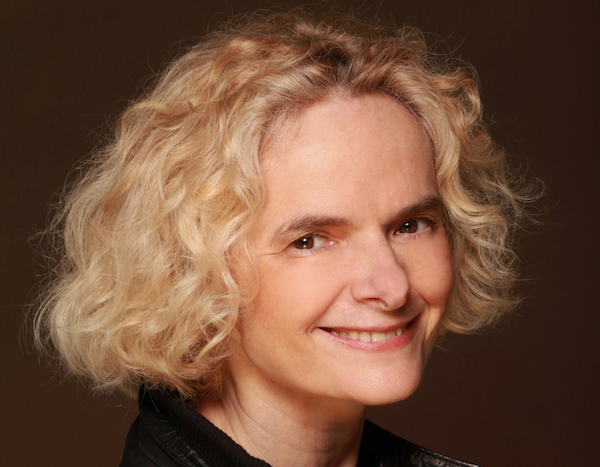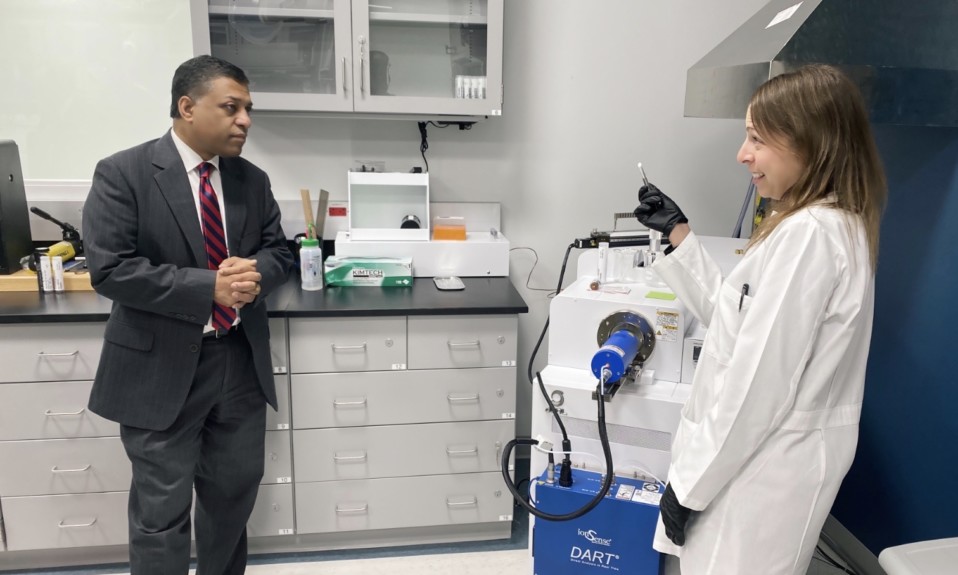Our conversation with the addiction treatment pioneer ranges from her motivation for entering the field to the work that still needs to be done
By William Wagner
Most addiction treatment professionals have a story—a personal reason for entering the field. Nora Volkow, M.D., director of the National Institute on Drug Abuse (NIDA) since 2003, is no different.
Growing up in Mexico City, she saw how her grandfather and uncle were all but ostracized because they suffered from alcohol use disorder (AUD). This didn’t sit right in her young mind, and she instinctively committed herself to doing something about it. A scientific star was born.
Volkow, now 65, has been as influential as anyone who ever has worked in the addiction field. Her pioneering work, most notably at the U.S. Department of Energy’s Brookhaven National Laboratory and NIDA, has helped lead to a recognition that addiction is a brain disease rather than some nebulous moral failing. As Emiliano Rodríguez Mega writes in a 2020 profile on Volkow in Nature, “[Her] obsession with understanding the biological effects of excessive drug use … has not only shattered dogmas in neuroscience; it has also helped to mitigate the stigma faced by those living with addiction.”
Her accomplishments are too voluminous to fully capture in this space, but here’s a glimpse: She has published nearly 800 peer-review articles; was named U.S. News & World Report’s “Innovator of the Year” (2000), one of Time’s “Top 100 People Who Shape Our World” (2007), and one of Fortune’s “34 Leaders Who Are Changing Health Care” (2017); and has earned international prizes for her work in brain imaging. Today, she is as motivated as ever to push forward. Despite all the advances in addiction care over the past several decades, Volkow says they “haven’t been sufficient.”
TreatmentMagazine.com spoke to Volkow about the obstacles that remain and the role she and NIDA are playing in surmounting them.
Q: Your work is personal on a certain level. Tell me about that.
A: My maternal grandfather suffered from alcoholism, and one of my uncles suffered from alcoholism. They were really remarkable people, but it was the notion of no one wanting to speak about them [that stuck with her as a child]. My grandfather committing suicide and no one addressing it—that secrecy when I was a child was something that aroused my interest [in addiction treatment]. My reaction was that it was unfair, because you’ve isolated the person. So I did have a personal experience in terms of how social distance interacts with people—the shame that comes with it.
What science has done is delineate the areas of the brain that are disrupted by drugs and lead to an addictive state. [Science has been able] to identify those changes in the brain that make you vulnerable to that state.”—Nora Volkow, director, NIDA
And there was also a scientific interest. As a scientist and a physician, I was very frustrated by the fact that we were not taught in medical school how to treat people with addiction. In fact, we were taught to disregard it—that it was a behavior we didn’t need to address. You could see that permeate all of medicine. That made me want to get into the field to understand it in a way where I could communicate information that would change those attitudes. How do I provide a new way of looking at these issues and understanding them?
Q: You touched on stigma there. How have views toward addiction changed during your career?
A: I wish I could say, “We don’t have to worry about stigma. There’s no stigma for addiction.” But that’s not the case. Yes, there is a much better understanding in general about why people who are addicted have changes in their behavior. It has led to the recognition by a lot of people that it’s not a choice—it’s an urge that is so intense it overpowers the control of the individual.
What science has done is delineate the areas of the brain that are disrupted by drugs and lead to an addictive state. [Science has been able] to identify those changes in the brain that make you vulnerable to that state. That knowledge, of course, has been crucial to changing perspectives. But it hasn’t been sufficient. Like with anything, you can bring the evidence, and [some] people reject it and continue to do things the way they did before.
[T]here is all this evidence about [various] interventions that can help, but they are not being used. It’s like with the [COVID-19] vaccine. We have made big advances with the vaccine, but there are some people who don’t want to get vaccinated. It’s not automatic that a solution you bring is going to be embraced.”—Nora Volkow
One factor that leads to stigma is a lack of understanding. Another factor is a lack of treatment and solutions. We have better understanding and better treatment, but we still lag behind in the development of interventions for addiction. It has been an area that has been neglected in the healthcare system and in the industry, which is not interested in developing medications. Patients suffering from addiction, especially, don’t have insurance. Those [types of] social components have contributed to stigmatization.
Q: What are a couple areas that are top of mind for NIDA right now?
A: Right now, top of mind is the challenge that has been brought on by the intersection of the opioid epidemic and COVID pandemic. We have been struggling over the past two decades to contain the number of overdoses associated with opioids and other drugs. With COVID, the problem has become much more complex.
We’ve known all along that one of the factors that drives drug-taking and mental illness is stress. The COVID pandemic has put us all into one of the most stressful situations we have lived in. The stress includes isolation, loss of loved ones, loss of jobs, loss of housing, economic turmoil, changes in the way we deal with one another. We all deal with stress differently, but for people who are more vulnerable, one of the outcomes is depression and anxiety and escaping into drug-taking. We see a lot of people taking more illicit substances and escalating the amount of drugs they are taking. And for those who are in recovery, we’re hearing from multiple places about relapses.
Q: What are a couple triumphs? Where do you see the field making great strides?

A: There is much good news amidst all of the challenges, including the fact that we’ve seen how science can come up with very remarkable solutions. We have various tools that actually have been shown to be effective not just in treating substance use disorder but also in preventing substance use. But the challenge we have is: Yes, there is all this evidence about [various] interventions that can help, but they are not being used. It’s like with the [COVID-19] vaccine. We have made big advances with the vaccine, but there are some people who don’t want to get vaccinated. It’s not automatic that a solution you bring is going to be embraced.
Q: I see that painting is one of your passions. You’ve collaborated with the painter William Stoehr, using art to help erase the stigma surrounding addiction. Why is this collaboration of such personal importance to you?
A: I love to paint, but I haven’t been able to since I took this job [at NIDA], because it’s all-consuming. I’ve always had a passion for the power art has in communicating and changing attitudes in people. I’ve been interested for many, many years in how to utilize the power of art to communicate scientific discovery, to communicate social challenges. How do you generate empathy, so that the person who is interacting with the addicted person reacts as they would to anyone else who is suffering? Art can help enormously. If you look at the portraits of William’s, they are extraordinary. They convey suffering.
Q: In your long and distinguished career, can you point to one thing you’re particularly proud of accomplishing?
A: If I were to choose one concrete example, it would be [the work on] how the use of science can help us clarify how drugs can change the brain, and then linking those changes to behaviors that are very difficult to understand for someone who has never suffered from addiction. This is the first step to changing the way you interact with or help someone who is addicted. That’s what I’m most proud of.














